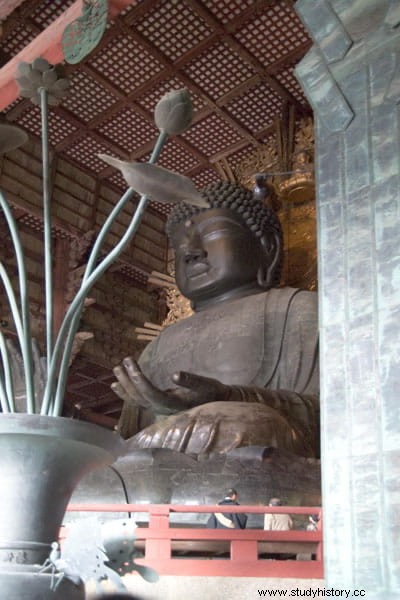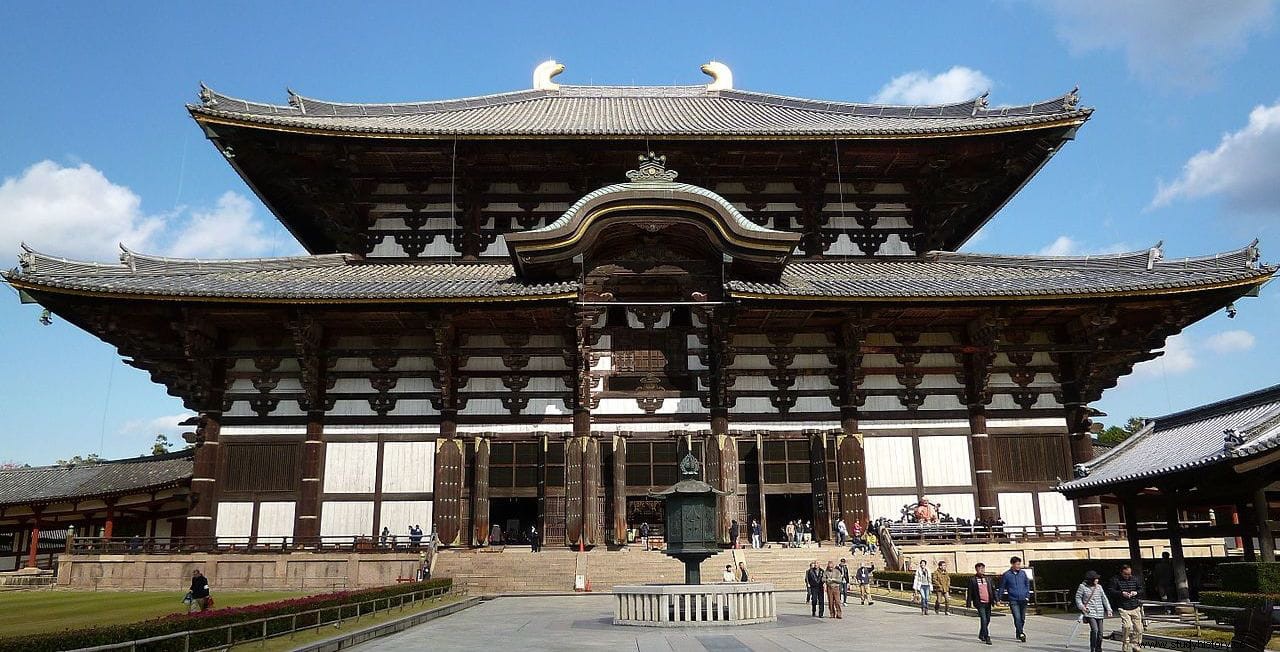Previously we told here the story of the Prinkipo orphanage, the largest wooden building in Europe, which, however, remains small compared to the Daibutsu-den o Great Hall of the Buddha, considered the largest wooden building in the world. And that maintains the record despite the fact that, after several reforms, today it is 33 percent smaller than when it was built.

It is located within the grounds of Tōdai-ji, a Buddhist temple in the town of Nara in Japan, whose first building was built in 746 AD. The Daibutsu-den It was built between 747 and 752 AD, the year in which the colossal bronze statue of the Vairocana Buddha that it houses inside was inaugurated (despite being unfinished), with a height of 16 meters and a weight of 437 tons. The ceremony was attended by more than ten thousand Japanese, Indian and Chinese monks.
It is estimated that some 370,000 blacksmiths and 500,000 carpenters worked on the construction of the building. Today it has dimensions of 57 meters wide by 50 meters high and deep, although as we said, due to several fires throughout history it had to be rebuilt twice, and those measurements are 33 percent smaller than the building original. The current structure dates from 1709.
Legend has it that more than two million people participated in the construction of the statue of the great Buddha, something certainly unheard of since it would mean practically half of the population of Japan at that time.
Tōdai-ji Temple was built at the behest of Emperor Shōmu and in response to a series of catastrophes and epidemics that ravaged the country during the Tenpyō era (729-749 AD). The emperor believed that Buddha was the answer to the calamities suffered, but his worship clashed with traditional Shintoism. For this reason, according to the legends, the monk Gyoki went to the Great Ise Shrine (the most important Shinto shrine in Japan), where he spent seven days reciting sutras until the oracle declared that Buddha was compatible with the cult of the solar goddess Amaterasu. . The way for Buddhism in Japan was open.

Today the Tōdai-ji temple is still active and its community of monks continues to perform daily rites and ceremonies, the most important of which is that of water and fire called Shuni-e . The temple and all its buildings are a UNESCO World Heritage Site, as well as one of Japan's top tourist spots.
The sika deer roam the grounds freely , considered by Shinto as messengers of the gods and which can be fed with the wafers that the monks sell in the compound.

